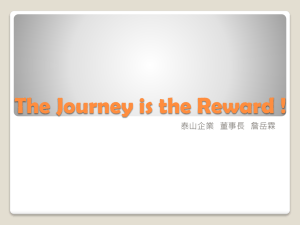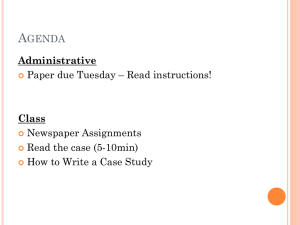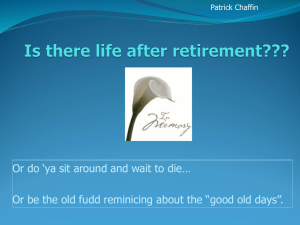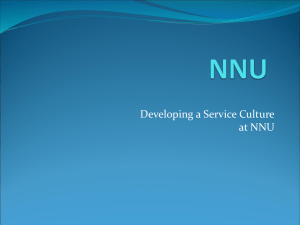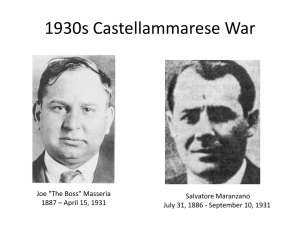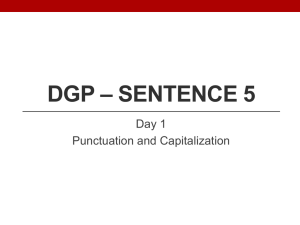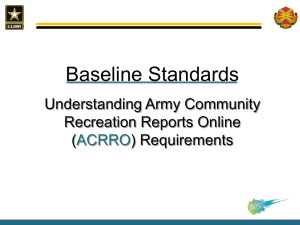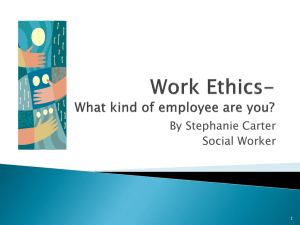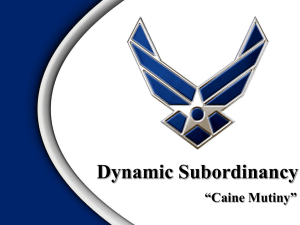Managing Up - American Association of Psychiatric Administrators
advertisement
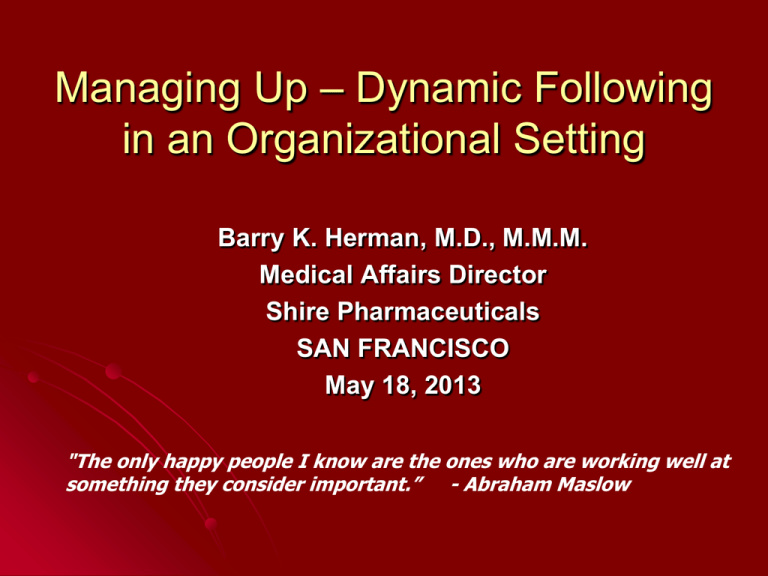
Managing Up – Dynamic Following in an Organizational Setting Barry K. Herman, M.D., M.M.M. Medical Affairs Director Shire Pharmaceuticals SAN FRANCISCO May 18, 2013 "The only happy people I know are the ones who are working well at something they consider important.” - Abraham Maslow Disclosure Barry K. Herman, M.D., M.M.M. is a fulltime employee of Shire Pharmaceuticals. The views expressed by Dr. Herman are not those of Shire Pharmaceuticals, its management, its employees, or its agents. This Story Has a Happy Ending! Managing Up Great organizations depend not only on dynamic leaders but on “dynamic followers.” A completely different LEADERSHIP Skill Set from that of managing direct reports Strategically working with the style and goals of your boss, blending them with your styles and goals to accomplish your career objectives (alignment) The process of consciously working with a supervisor to obtain the best possible results for you, your supervisor and your organization Managing Up A deliberate effort to bring understanding and cooperation to a relationship between individuals who often have different perspectives. Managing Self Required Skill Set Awareness of own style and how it affects others; make necessary adjustments Receptive to and respond positively to constructive suggestions Develop and maintain positive work relationships with others Maintain a reputation for trust, fairness and reliability The Wish- Ideal Boss Clear, consistent,and concise vision of where the organization is going Encourages a sense of responsibility for ongoing work Develops your ability to manage yourself and to take ownership of projects. Not threatened by competencies that exceed his or her own Engenders greater commitment and increases motivation Seeks opportunities to enhance your visibility and influence and to advance Celebrates your successes! The Reality Assessing your Boss Management Style Emotional Style Cognitive Style Personal Style-Idiosyncrasies, Quirks, Pet Peeves Situation Analysis - Where is your boss in the organizational system How do decisions get made that effect you? What are your bosses own goals? Where are the points of intersection with yours? Operating Environment Organization Mission Job Boss’ Boss You Boss Department/ Team Organizational Culture Managing Up Strategy Think of your boss as a key customer and your potential best advocate Develop and communicate shared goals Learn from your boss Support your boss's vision and goals Turn criticism into projects or proposals Negotiate your wants (time, work, position) The Managing Up Action Plan Personal Organizational Mission Mission Short & Longterm Objectives Short & Longterm Objectives Marketing Strategy Marketing Strategy Strengths Weaknesses Strengths Weaknesses Opportunities Threats Opportunities Threats Action Plan Action Plan Building Trust Mutual trust is a shared belief that you can depend on each other to achieve a common purpose Respect differences; Look for commonality Develop understanding NOT dependency or sycophantic behavior Listen Actively Do what you say you’ll do You don’t have to always agree, but if your boss feels that you are ultimately on his/her side you will receive what is available Managing Your Boss in Conflict Trust Disintegrates Key: Diagnose and act quickly Conflict Resolution Manage your emotions Seek first to understand and LISTEN! Look beyond the presenting problem Seek help----COACHING!! What Your Boss Can Do to You (Short of Firing You) Subvert and contaminate relationships with teammates and with other internal stakeholders Assign high profile projects and initiatives to other team members Employ tactics such as ultra micromanagement to make you miserable Focus on minor performance issues and devalue successes Block personal and professional advancement Financial impact on performance bonus, stock options, other perks Your Options (In Order of Increasing Likelihood of Getting Fired!) What can you do? No Action Bottle up feelings; decreases productivity and health—you will eventually become sick and miserable Modify your own behavior only May be only a temporary solution to buy time Manage your boss* Constructive criticism, set regular private meetings Consider Outside help like Coaching Oppose your boss Fire your boss Coaching The Goal of Executive Coaching is to Learn to “observe the observer that you are” Challenge self-perceptions and blind spots Become more aware of how you are perceived by others and how you interact with the world Develop the power and leverage to change To take action with a different “world view” that is more effective Coaching is NOT THERAPY! Four Steps Assess Reality 1. Develop a clear sense of what’s really going on Various tools include a “360 process” Coach interviews co-workers, direct reports, supervisors, past and present Emotional Intelligence Surveys (Hay Group ECI) Compare “realities”—often shocking discrepancies Agree on Goals 2. What do you want to accomplish? Keep Your Job! Recognition Increased visibility and influence Promotion and advancement Plan of Action 3. Commitment to ongoing process of working with your Coach Work to identify ways to become more aware of “blind spots” Focus on behavior, not on feelings How to align your goals with those of your boss Regular contact with Coach by telephone and face-to-face meetings Process involves Coach support, ongoing review of results, adjustments as necessary Reinvent Yourself 4. Change your World View Coach becomes your confidante, source of objective feedback, advocate Gradual process—tend to revert back to your “old story” when under stress Ultimately to take action with a new world view Internally---a “new story” that you tell about yourself Externally---more effective behavior ...Know when to fold em When your personal action plan deviates from the organization’s strategic plan When you can’t align your goals with those of your boss When you stop learning When you hate going to work Resources Block, Peter, (1981) Flawless Consulting: A Guide to Getting Your Expertise Used. San Francisco, CA: Jossey-Bass/Pfeiffer. Browne, M. Neil & Keeley (2001) Asking the Right Questions: A Guide to Critical Thinking. Upper Saddle River, NJ: Prentice Hall. Dobson, Michael & Dobson, Deborah Singer (1999) Managing Up!: 59 ways to build a career-advancing relationship with your boss. New York, NY: American Management Association. Goleman, Daniel (1998) Working with Emotional Intelligence. New York, NY: Bantam Books Goleman, Daniel (2006) Social Intelligence: The New Science of Human Relationships. New York: Bantam Books Hathaway, Patti & Schubert, Susan D. (1992) Managing Upward: Strategies for Succeeding with your Boss. Boston, MA: Thompson Learning. Munter, Mary (2000) Guide to Managerial Communication: Effective Business Writing and Speaking. Upper Saddle River, NJ: Prentice Hall. Osborne, Christina (2003) Managing Your Boss. New York, NY: DK Publishing. Patterson, Kerry; Grenny, Joseph; McMillan, Ron & Switzer, Al (2002) Crucial Conversations: Tools For Talking When Stakes Are High. New York, NY: McGraw Hill. Resources • • • • • • • • • • • • • Peter Block Online: http://www.designedLearning.com/ CEO Refresher: http://www.refresher.com/ Free Management Library: http://www.mapnp.org/library/ Milano Graduate School Mix: http://www.lcmmix.org/ Leader Values: http://www.leader-values.com/ Center for Creative Leadership: http://www.ccl.org/ Society for Org. Learning: http://www.solonline.org/ Leader to Leader: http://www.pfdf.org/ Workforce Management (HR): http://www.workforce.com/ Change Management: http://www.change-management.org/ International Society for Performance Improvement: http://www.ispi.org/ (Nonprofit) Transition Guides: http://www.transitionguides.com/ Maslow: http://maslow.org/ • Kesslin Associates: http://www.kesslin.com Thank you to Ken Kesslin Kesslin Associates Inc. 2009 Saint Albans St. Philadelphia, PA 19146 212.865.2999 info@kesslin.com http://www.kesslin.com
